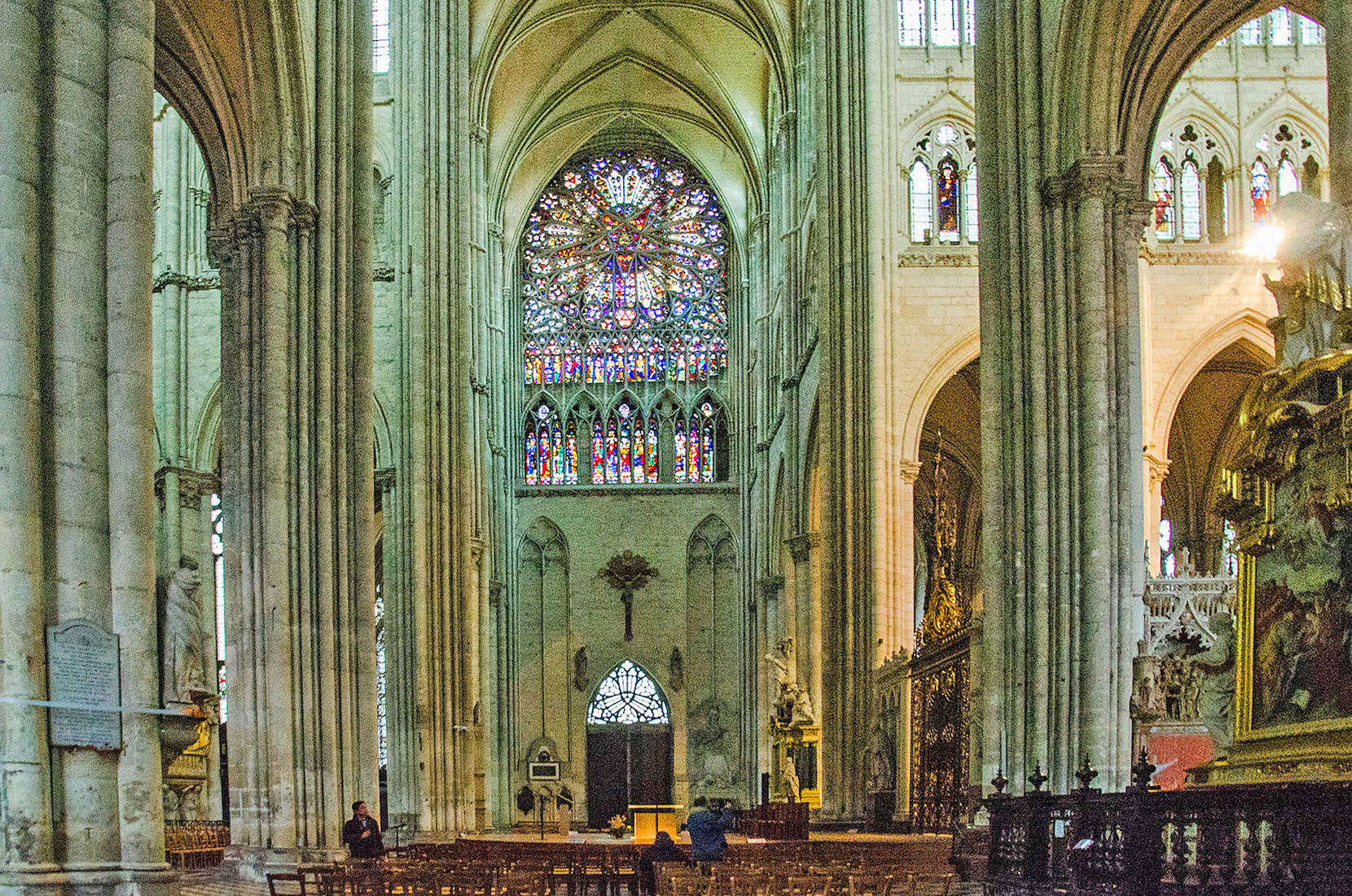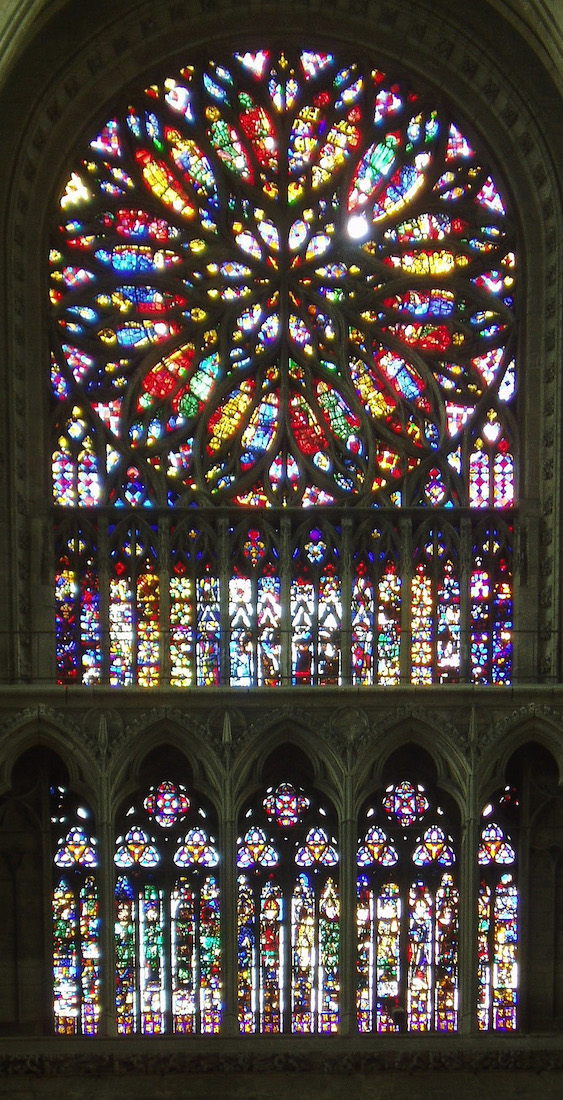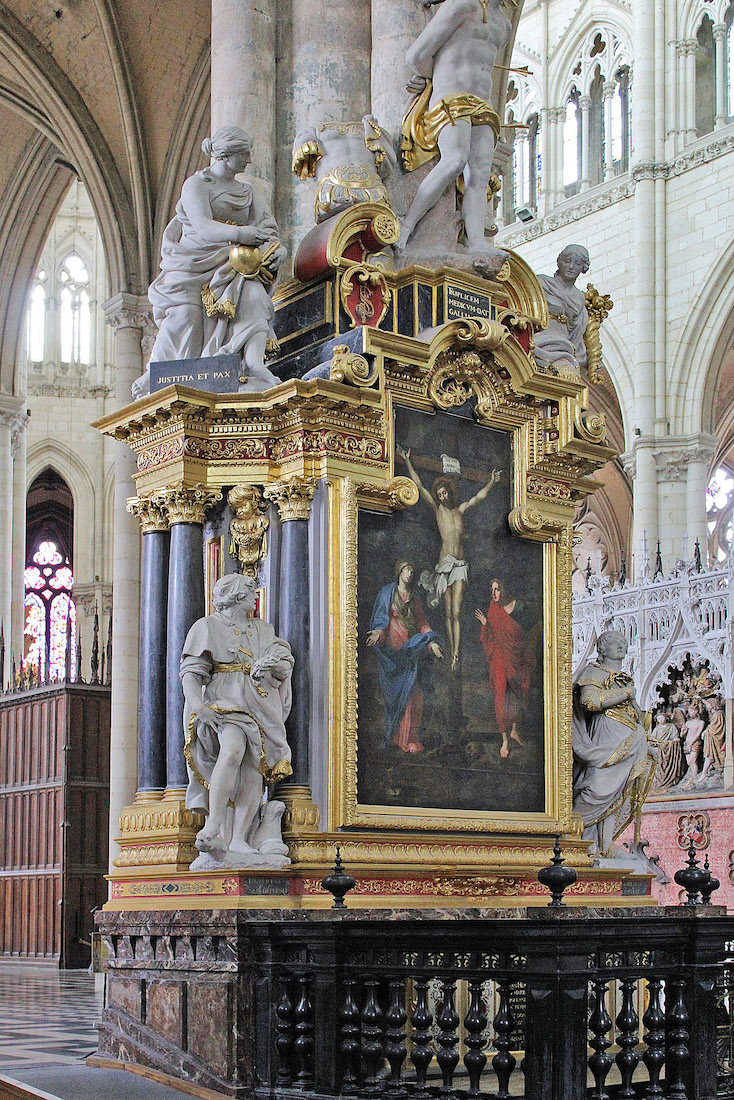CROSSING AND TRANSEPTS

Now we are standing at the crossing – the intersection of the axis of the Cathedral (nave and chancel) and the transepts. On the raised platform we see the nave altar and the ambo, along with several chairs for the clergy. The grand black and gold wrought iron screen marks the entrance to the chancel (choir), and we can see some of the wooden choir stalls through the screen. To the right of the platform is the entry to the South ambulatory, the ‘Assumption of the Virgin’ painting, the entry to the Chapel of St Peter and St Paul, and at extreme right, part of the South wall of the South transept. INDEX
T2. CROSSING, LOOKING TO THE SOUTH TRANSEPT SZ

Before looking at any details, let us gain our bearings. Here we look past the crossing platform straight across to the South transept. To our left is another special painting – this one of the Crucifixion. To the right are a couple of monuments. Perhaps we should look at these first!
T3. TWO MONUMENTS WC WC
At left is a monument for Canon Claude Pierre, by Nicolas Blasset, 1600–1659, with a sculptural group of Claude Pierre kissing the feet of Christ. •• Charles de Hémard de Denonville (1493–1540), shown in prayer at right, was a French Roman Catholic bishop and cardinal. •• We now continue viewing the South transept ... . [Photo Credits:Wikimedia Commons Dguendel & Bycro]
T4. SOUTH TRANSEPT SZ
Here we see another wonderful rose window, with a set of colourful lancets below. The ancient vaulting shows some worrisome cracking.
T5. NORTH TRANSEPT LM
In the other direction, we can view the North transept over the crossing platform. Another wonderful rose window, with lancet windows beneath. At top right we also obtain a first glimpse of stained glass in the clerestory windows of the Eastern end of the Cathedral, but more of them later. For now we observe a North-South aisle just West of the main transept space. We explore that next.
T6. SOUTH TRANSEPT RELIEF CD
The Eastern nave chapels of St Marguerite and St Agnes are separated from the transepts by walls, which are decorated on the transept side by incredible polychromatic reliefs. Shown is the relief on the South side which purports to show the story of St James the Greater’s conversion of Philetus and Hermogenes (1511).
T7. NORTH TRANSEPT RELIEF CD CD
The corresponding relief in the North transept shows Jesus purging the temple of the moneylenders (1523).
T8. TO THE NORTH TRANSEPT WINDOW (WEST) LM
We make our way further into the North transept to view two interesting windows. We also note the two confessionals, and an ancient trough.
T9. NORTH TRANSEPT WINDOW (WEST) AMT
This window is at the Northern end of the West transept aisle. I find it a very unusual and interesting window, but unfortunately I am unable to locate any details about it.
T11. NORTH TRANSEPT CONFESSIONALS MW
A confessional is a stall in which the priest in some Christian churches sits to hear the confessions of penitents. It is the usual venue for the sacrament in the Roman Catholic Church and the Lutheran Churches, but similar structures are also used in Anglican churches of an Anglo-Catholic orientation. In the Catholic Church, confessions are only to be heard in a confessional or oratory, except for a just reason. These dark, gloomy confessionals do not seem to be at all inviting!
T12. NORTH TRANSEPT WINDOWS CD
On the main North transept wall we note the ‘triangular’ window above the portal, the unusual red crucifix, and then at top the rose window with lancets beneath.
T13. NORTH TRANSEPT ROSE WINDOW WC
The rose window of the North transept has the characteristic radiating tracery of the Rayonnant Gothic. We notice the regular pentagon at the centre, which determines a five-fold symmetry for the window. However, the top of the window has been lightened with the removal of some of the masonry supports. [Photo Credit: Wikimedia Commons Blue-Rich]
T14. SOUTH TRANSEPT WINDOWS AMT
While we are thinking about rose windows, we turn to look at the South transept with its vivid round window and lancet windows below.
T15. SOUTH TRANSEPT ROSE WINDOW WC
The rose window of the South transept is the latest of the three rose windows, dating from 1489–90. It features the curves and reverse curves of the late Gothic Flamboyant style. It is in a style characteristic of the Picard style of window in the 15th century. The symmetries are appealing: six 'tulips' pointing out from the centre, breaking down into twelve 'petals', and 24 angels with heads towards the centre. ]Photo Credit: Wikimedia Commons Txllxt]
T16. VIEW OF SOUTH TRANSEPT OVER CROSSING WC
Looking to the South transept from the North side of the crossing, we have a fenced altar on our left, standing by the steps and ramp to the North ambulatory. This is called the Altar of the Green Pillar – a name almost certainly deriving from a time when the Cathedral was much more polychromatic in its decor. [Photo Credit: Wikimedia Commons Diliff]
T17. ALTAR OF GREEN PILLAR WC WC
Le Pilier Vert (1634) by Nicholas Blasset is the chapel altar dedicated to the martyrdom of Saint Sebastian. Saint Sebastian is at the top, riddled with arrows. He is the protector against plagues. The painting of Calvary is from the 18th century. [Photo Credits: Wikimedia Commons Dguenedl & Alf van Beem]
T18. ALTAR OF RED PILLAR AMT CD
On the opposite side of the Cathedral is a ‘matching’ altar. This chapel and altar are titled Notre Dame du Pilier Rouge (Our Lady of the Red Pillar). The statues of Notre-Dame-du-Puy, David, Solomon and Judith are all also by Nicolas Blasset. The painting of the Assumption is by François Francken le Jeune. [Puy is a small extinct volcanic cone in the Auvergne, France.]





















